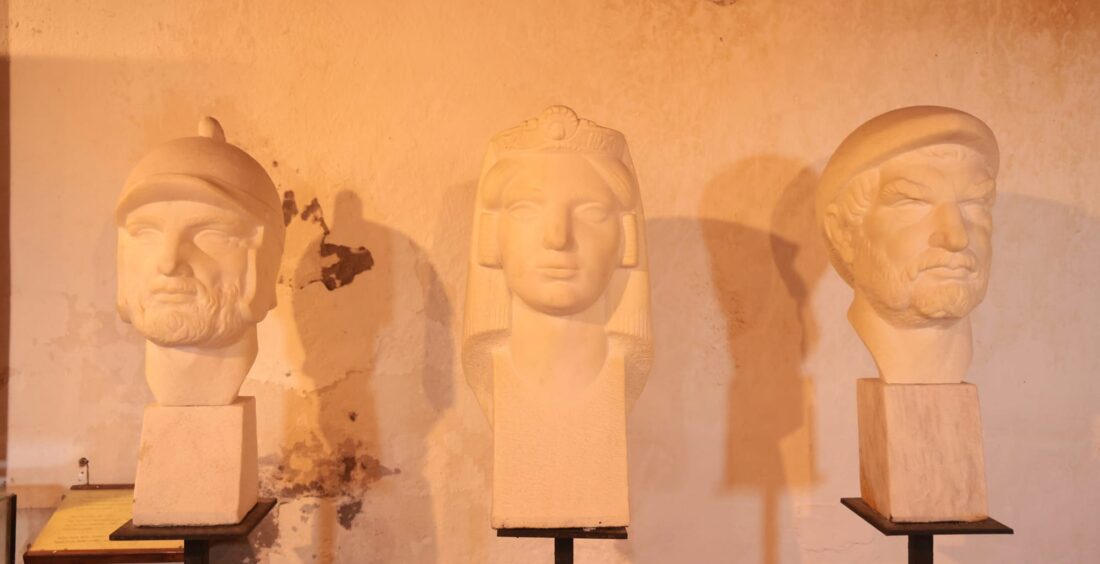The Shkodra Historical Museum was established in 1947 under the name “Folk’s Museum” and was officially founded in 1949 with all of its current components. The museum was located in the center of the city, in a monumental building of the 19th century, the value of which was enhanced by the “Clock Tower” next to it. The museum was assembled on the basis of the old collections of the Jesuit and Franciscan assemblies established since the end of the 19th century, as well as the collections of Shkodra families. Then they were added through donations, purchases, chance finds and archaeological excavations. In 1996, the Historical Museum of Shkodra was transferred to the restored monumental residence, a typical Shkodra house of the patriot Oso Kuka, where it is still located today. The museum consists of the following sections: ethnography, archaeology, visual arts and the library that serves as a fund of scientific studies used by the staff working in its activity. The house contains a museum complex that you rarely find in any other city, with objects and environments that show the way of life in the north of Albania.
In November 2002, the Sector of Archeology was inaugurated, which is located on the ground floor of the building and contains about 500 objects, of which about 200, among the most selected, are exposed; the rest is stored in the fund. The archaeological – museum objects of this sector represent all historical periods, from Neolithic 6000 years BC. until the late Middle Ages, XVI century. The facilities have a geographical scope that includes all areas of Shkodra. A good part of them comes from random finds, but there are also objects that come from the archaeological excavations of the expeditions carried out in this territory. The exhibited objects are diverse, starting from work tools, household and transport vessels, cult objects, war weapons, ornaments, cemetery objects, architectural objects, coins and medals. Some of them are of outstanding artistic value, while in terms of the material used, they are made of flint, stone, marble, bone, ceramics, metals, glass, etc. Among them there are objects of local production, but also income through trade exchanges with different countries of the world.
The Sector of History contains the documentary archive and historical relics. It is among the richest in the museum fund of Albania. It is divided into 55 funds. The subject it contains is of a historical, economic, cultural, artistic, linguistic, educational, administrative, museum, social, memorial character. Translations into Albanian and publications made by the Museum after 1949 are also stored there. Part of the Archive is also a film library with historical materials filmed in the Central State Archive and other images (over 3000 in total). Also, a Phonotheque with a collection of records. the first gramophones, recorded in Shkodër after 1953, and oral recordings of historical memory. A separate collection consists of photographs, where events, individual or group characters, various monuments, historical personalities, etc. are recorded. The oldest document is considered a four-page parchment still undeciphered, which is thought to date from the XII – XIV century. The fund of historical objects of the Museum consists of 4 main collections documenting the period from the 15th century to the present day: the Collection of Weapons, the Collection of Relics, the Collection of Seals and the Numismatic Collection.
The Department of Ethnography has a fund of about 1230 objects belonging to the XVIII – XX centuries. They are handicraft products of the city of Shkodra and the geo-ethnographic areas of its basin: Dukagjin, Malësia e Madhe, Shllak, Postrriba, Zadrima, Anamal, Kraja, as well as the provinces of Puka and Mirdita. Some of them are produced by individuals from urban or rural families, while the rest are products of the artisans of the city of Shkodra, following the centuries-old local tradition, but also with new elements, influenced by contacts with foreign cultures, at different times. In the collection of the Museum, there are nearly 50 traditional musical instruments such as the lahuta, qifteli, fyej, zumare, saze etc.



